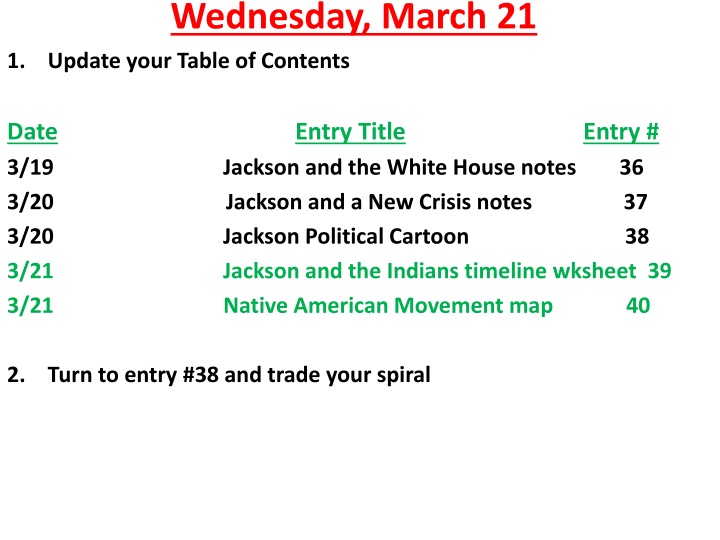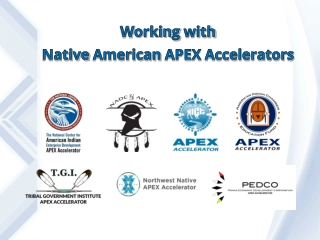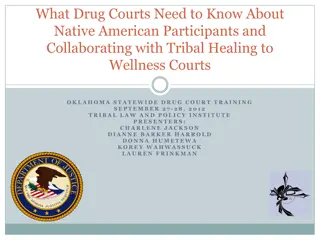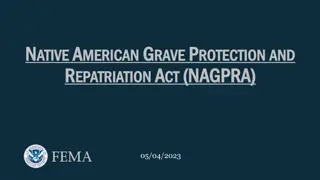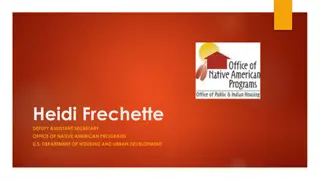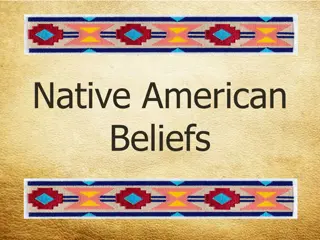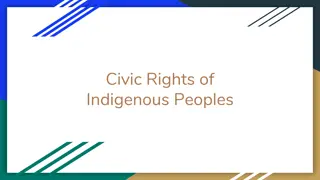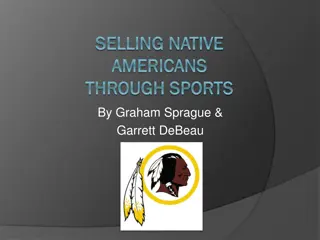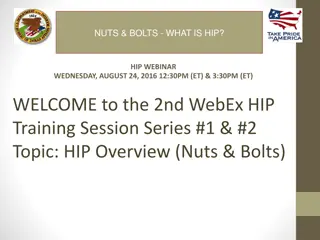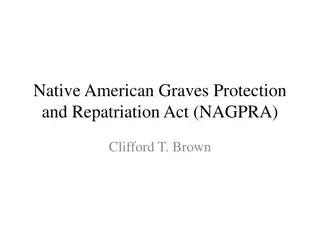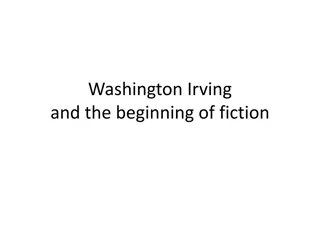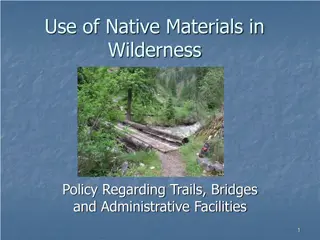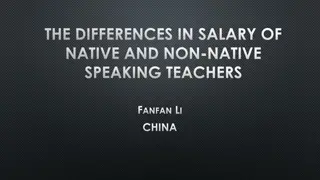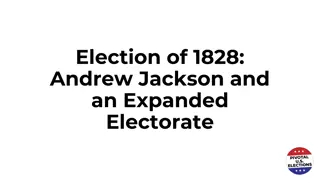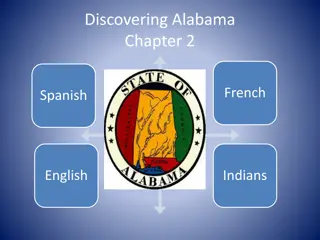Jackson's Native American Policy Overview
Explore Andrew Jackson's policy towards Native Americans, including the Indian Removal Act, Cherokee Nation, and the impacts on various tribes. Gain insights into the events leading up to forced relocations and the consequences faced by indigenous peoples during this period of American history.
Download Presentation

Please find below an Image/Link to download the presentation.
The content on the website is provided AS IS for your information and personal use only. It may not be sold, licensed, or shared on other websites without obtaining consent from the author.If you encounter any issues during the download, it is possible that the publisher has removed the file from their server.
You are allowed to download the files provided on this website for personal or commercial use, subject to the condition that they are used lawfully. All files are the property of their respective owners.
The content on the website is provided AS IS for your information and personal use only. It may not be sold, licensed, or shared on other websites without obtaining consent from the author.
E N D
Presentation Transcript
Wednesday, March 21 Update your Table of Contents 1. Date 3/19 3/20 Jackson and a New Crisis notes 37 3/20 Jackson Political Cartoon 38 3/21 Jackson and the Indians timeline wksheet 39 3/21 Native American Movement map Entry Title Entry # Jackson and the White House notes 36 40 2. Turn to entry #38 and trade your spiral
Did Mrs. Siek take role???? Yes go on to next slide No GO TAKE ROLE NOW!!!!!
373 in blue book 1. A veto
373 in blue book 1. A veto 2. The U.S. Constitution and a document concerning the bank; trampled, tattered, or torn to bits
373 in blue book 1. A veto 2. The U.S. Constitution and a document concerning the bank; trampled, tattered, or torn to bits 3. Attacks him as King just as the British Whigs did who opposed a King
373 in blue book 1. A veto 2. The U.S. Constitution and a document concerning the bank; trampled, tattered, or torn to bits 3. Attacks him as King just as the British Whigs did who opposed a King 4. He is standing on the Constitution and a book titled Judiciary of the United States is thrown on the floor
Chapter12Section 2Jacksons Policy Toward Native AmericansP. 44/ P.358 A. Sequencing Events As you this sections, answer the questions about events shown in the time line below. 1827 1. In what ways was the Cherokee Nation like the United States? Both had governments and a constitution. 2. What did the Indian Removal Act call for, and why did Andrew Jackson support it? 1827 Cherokee Nation founded. 1830 Congress passes the Indian Removal Act 1831 Removal of Choctaw and other southeastern peoples from their lands begins.
Chapter12Section 2Jacksons Policy Toward Native AmericansP. 44/ P.358 A. Sequencing Events As you this sections, answer the questions about events shown in the time line below. 1827 1. In what ways was the Cherokee Nation like the United States? Both had governments and a constitution. 2. What did the Indian Removal Act call for, and why did Andrew Jackson support it? The acts called for the govt to negotiate treaties that would require Native Americans to relocate West 1827 Cherokee Nation founded. 1830 Congress passes the Indian Removal Act 1831 Removal of Choctaw and other southeastern peoples from their lands begins.
B. Summarizing Briefly explain the importance of the following in the conflict over the removal of Native American from their lands. Law that Jackson used to force the removal of the N.A. from E of the Mississippi Indian Removal Act- Land W of the Mississippi that would be the new home of the SE tribes Indian Territory-
3. What did the Supreme Court decide in the case, and what was President Jackson s response to the ruling? The Supreme Court ruled only the federal govt, not the states, could make laws governing the Cherokees 1832 The Supreme Court rules on case between Georgia and the Cherokees 4. What was the outcome of the Seminoles refusal? 1835 Seminoles refuse to leave their land. 5. Why is the forced removal of the Cherokees referred to as the Trail of Tears? 1838 Forced removal of all Cherokees from Georgia begins
1827 3. What did the Supreme Court decide in the case, and what was President Jackson s response to the ruling? The Supreme Court ruled only the federal govt, not the states, could make laws governing the Cherokees 1832 The Supreme Court rules on case between Georgia and the Cherokees 4. What was the outcome of the Seminoles refusal? The Seminoles fought the 2nd Seminole War to resist relocation 1835 Seminoles refuse to leave their land. 5. Why is the forced removal of the Cherokees referred to as the Trail of Tears? 1838 Forced removal of all Cherokees from Georgia begins
Sauk Chief Black Hawk led a band of Sauk and Fox Indians back to their lands in Illinois. Image:Chief Black Hawk3.jpg Seminole leader Osceola Black Drink helped fight against removal from his homelands in Florida.
1827 3. What did the Supreme Court decide in the case, and what was President Jackson s response to the ruling? The Supreme Court ruled only the federal govt, not the states, could make laws governing the Cherokees 1832 The Supreme Court rules on case between Georgia and the Cherokees 4. What was the outcome of the Seminoles refusal? The Seminoles fought the 2nd Seminole War to resist relocation 1835 Seminoles refuse to leave their land. 5. Why is the forced removal of the Cherokees referred to as the Trail of Tears? Because so many Cherokees lives were lost on this harsh journey away from their lands http://www.youtube.com/watch?v=Iycym3JonJk&NR=1 1838 Forced removal of all Cherokees from Georgia begins
B. Summarizing On the back of this paper, briefly explain the importance of the following in the conflict over the removal of Native American from their lands. Law that Jackson used to force the removal of the N. Americans from east of the Miss. River. Indian Removal Act- Land west of the Mississippi that would be the new home of the Southeastern tribes Indian Territory- Chief Black Hawk led a band of Sauk & fox back to their lands in IL. In 1832, but were defeated by IL. Militias and US Army. Black Hawk War-
Vocabulary chapter 12 Jacksonian Democracy Indian Removal Act Trail of Tears Doctrine of Nullification Secession Panic of 1837 Whig Party Spoils System Indian Territory Tariff of Abominations Webster-Hayne Debate Inflation Depression
